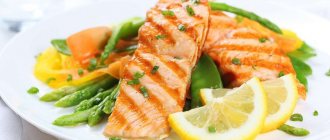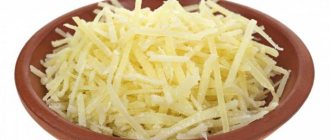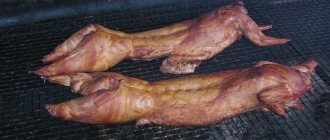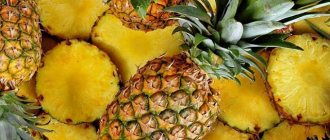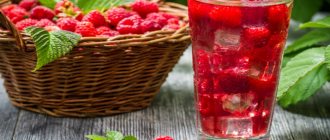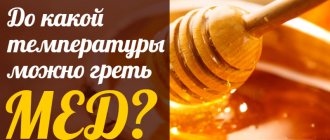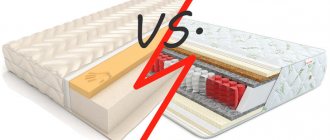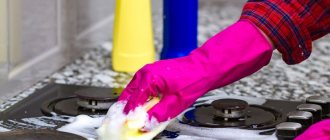How to choose the right cauldron
A cauldron is a thick-walled cauldron with a well-fitting lid.
It usually has a round bottom, but there are also options with a flat bottom. Such models are convenient for cooking in any kitchen. How to choose the right cast iron cauldron? At first glance, it seems that it is not difficult to go and buy a model that you like and that is suitable for the price. But in reality, choosing a good cauldron is not so easy. Ideal dishes will be obtained only in products that are as similar as possible to the dishes that are used by Uzbek, Turkmen and housewives of other Central Asian countries. When choosing a cauldron, consider what the product is made of, what its shape is, what its volume is, what the thickness of the walls is and what the bottom looks like.
Before you go to the store, decide on the type. Cauldrons can be:
- Afghani. They have an unusual shape - essentially it is a pressure cooker.
- Uzbek. They differ from other models in characteristic features. The main feature is thick cast iron walls and a round bottom.
- Chinese. A wok is a type of round-shaped pot, but with a different operating principle and cooking mode. They don’t simmer in a wok, but fry, and quickly.
Afghan cauldron
Uzbek
Chinese wok
Operating principle and design of the cauldron
A cauldron is a metal cauldron with a sloping bottom. Traditionally used for preparing Central Asian dishes. The cauldron is installed on special tripods or in the oven. Cooking stoves with chimneys are either stationary or portable.
The cauldron must be supplied with a lid, which must fit tightly, leaving no gaps for steam to escape. It is made from the same material as the cauldron or from wooden boards. Sometimes the products are equipped with a solid handle so that it can be used to hang the cauldron over the fire.
The hemispherical shape of the cauldron is intentional. It has the widest diameter at the top, becoming increasingly narrower at the bottom. When the dishes are lowered directly into the fireplace, not only the bottom itself, but also the rounded sides are heated by the flame.
The food inside receives heat much faster and remains hot for a long time, thereby saving fuel. The abundant formation of steam allows the contents not to fry, but to simmer slowly, making the food soft, crumbly and aromatic.
During cooking, all the spices have time to saturate the food, and this is another feature of the traditional cauldron.
Optimal shape and volume of the cauldron
Size and shape are the factors that decide how much food can be cooked at once and in what way. How to choose the volume of a cauldron? When choosing dishes, be guided by the following proportions: one liter per person.
The volume is indicated on each model. Usually it ranges from 2 to 30 liters, and the Afghan cauldron can reach 50 liters in volume. But this is the maximum value, keep in mind that no one fills the dishes to the brim.
Depending on the volume, cauldrons are divided into:
- Miniature - up to 7 l.
- Medium - from 7 to 15 liters.
- Large - from 15 to 20 liters.
- Huge - from 25 liters.
A 3-5 liter container is enough for a family, but for guests you will need a 12 liter option. At home, using products larger than 8 liters is not particularly convenient - it is difficult to achieve the required temperature. For an open hearth, for example, for a summer house or for a private home, large models of 18–20 liters are suitable.
Types of cauldrons
The current variety of cauldrons satisfies the requirements of any, even the most demanding gourmets. There are models equipped with two handles. There are cauldrons with 3 holders that allow you to hang the container over an open flame. But these are not the main differences - cauldrons are distinguished by volume, material of manufacture, and shape. In order not to make a mistake with the model, you need to take into account a combination of several characteristics.
Bottom shape and volume
In its traditional design, the cauldron resembles a hemisphere. This shape is very convenient for cooking on the go. The convex bottom allows you to evenly heat the container and the products contained in it.
Relatively recently, cauldrons adapted for conventional stoves began to be produced for the mass consumer. They have a flat bottom, which allows you to prepare dishes at home in familiar conditions.
Also interesting: Cauldron for induction cooker: cast iron or aluminum
As for volume, the current assortment is represented by very tiny cauldrons (up to 2 liters) and substantial boilers (20 or more liters). The choice depends on the number of people you need to cook for and the purpose of the cookware. So, for example, for a small company of 2 people, a cauldron with a capacity of 3 liters or a little more is quite suitable. For a large family, it is better to buy a larger boiler, with a volume of 5 liters or more. Much depends on the menu.
You can correctly calculate the required volume of the cauldron using the following algorithm:
- 1.5–2 liters – for 1 person.
- 5 liters – for 2–3 people.
- 8 liters – for 5–6 people.
- 15–20 liters – for a company of 10 or more people.
As life practice shows, pilaf in large cauldrons turns out to be the most satisfying and rich. By the way, to prepare this dish, the ingredients must fill 2/3 of the total volume of the pot.
Lid, cauldron walls and handle
Most models are sold complete with a lid, usually made from the same material as the cauldron itself. However, there are lids made of wood or aluminum, while the vessel itself is made of cast iron - this allows you to slightly reduce the weight of the entire structure.
When choosing a suitable cauldron, you need to take into account the tight fit of the lid to the dish. The diameter of the lid and the top rim should fit each other perfectly. If the cauldron itself is made of cast iron, then it is advisable to choose a model with a lid made of a different material - this will lighten the weight of the product.
Cauldrons for fire and home use may differ slightly in design. For example, a cauldron for an open fire is often equipped with an upper stationary handle, by which it is convenient to hang it, and two additional ones for better grip of the dishes.
As for a home cauldron, there is no need for a top handle as such. But this cookware much more needs two side handles, by which you can grab the cauldron without fear of getting burned.
The wall density cannot be less than 3 mm. The maximum limit is 6 mm. From manufacturers you can see models with a wall thickness of 10 mm - you should not purchase such a product for cooking, since the process will take too much time.
Types of materials
In this case, the only parameter that matters is the uniform heating of the walls of the cauldron and what is inside it. This parameter affects not only the quality of preparation, but even the taste characteristics of the dish. Traditionally, the cauldron is made of cast iron. But today there are containers made from a wide variety of materials.
Let's find out what cauldrons can be made from:
- Teflon or enamel coating. This is a modern version of a cauldron. It looks very decent, but the same cannot be said about the quality of the dishes. The decorative coating quickly collapses under the influence of high temperatures. In addition, Teflon requires the use of special mixing blades.
- Copper. This material cannot be called suitable for the production of cauldrons, although residents of some regions of Azerbaijan and Uzbekistan still prefer to use just such utensils. Copper is not resistant to corrosion, it heats up quickly and does not hold the temperature well, which makes it difficult to follow the cooking technology for some dishes. In addition, copper cookware requires delicate care.
- Aluminum. A very common material in the kitchen. Some manufacturers have started producing cauldrons made of cast aluminum. By the way, in this regard, the material is practically not inferior in quality to durable cast iron. In such cauldrons you can cook both on a regular stove and over an open fire.
- Cast iron. The most common material in the production of cauldrons. This is practically indestructible tableware that will last for several generations.
Teflon coated cauldron
Enameled cauldron
Copper cauldron
The advantage goes to cauldrons made of cast iron or cast aluminum. Products made from other materials are impractical and short-lived.
And now we will talk in detail about the most common materials used in the production of real cauldrons.
Also interesting: How to heat a cauldron (cast iron and aluminum)
Which is the best bottom for a cauldron - flat or round?
Which cauldron is more convenient - with a flat or round bottom? The most delicious dishes come out in hemispherical pots, since they ensure uniform heating of the food and make it easy to mix all the ingredients.
Flat and round bottoms of cauldrons The choice of the shape of the cookware is interconnected with the cooking method. Classic models with a rounded bottom are ideal for pilaf, but are more suitable for stoves and fires. In an ordinary kitchen, such pots are inconvenient. For a gas stove, use round or oval-shaped dishes with a flat bottom. For induction panels there are product lines with a special bottom.
What is a cauldron
A cauldron is a utensil for cooking over an open fire . However, there are models for gas or electric stoves. This container is used in Oriental and Russian cuisine. It serves pilaf, lagman, azu, vegetable stew, basma, chakhokhbili, khashlama and other dishes.
Features and Specifications
The bottom and walls of such a container heat up . This increases the speed of cooking, which was especially important in ancient times, when food was cooked exclusively over an open fire. At the same time, the food did not cool down for a long time, retaining its taste and aroma.
Interesting! Previously, the cauldron was used mainly by nomadic peoples. The dishes were placed in a deep dug hole, where a fire was lit or hot stones were laid out in a heap.
Forms
Cookware with a classic round shape is suitable for cooking over an open fire. To use such a container, install a tripod. Thanks to its round shape, the container heats and cools evenly.
A cauldron with a flat bottom has a spherical shape . It cooks dishes on a gas or electric stove. This product heats up more slowly, but does not require special stands or supports.
Wall Density
This indicator affects the degree of simmering of products. When the walls are thick, then languishing occurs in the right way. It is better not to buy products with thin walls of suspicious quality: firstly, it will be difficult to achieve the desired taste, and secondly, the use of such utensils is unsafe.
Standard wall thickness is 4–5 mm. This indicator shows how well the cookware maintains temperature. Sometimes there are models with thicker walls, but it’s better not to take anything smaller.
Food in thick-walled dishes heats up more evenly and stays warm longer.
When purchasing cookware, make sure that there are no chips or any irregularities on the inner surface of the walls.
Cauldron selection parameters
Form
1. Hemispherical
Traditional cauldrons have only a hemispherical shape with a rounded bottom. Thanks to this, the boiler heats up not only in the bottom area, but also in the walls, which allows the contents to be heated evenly. Such models are used on an open fire using special tripods or stoves.
2. Flat bottom
Since hemispherical cauldrons cannot be installed on a stove, specimens with a straight bottom were invented. Such products are very easy to install on any burner of your home stove. Some models resemble pans, having a hemispherical shape with a small seal at the bottom.
Volume
The volume is indicated on each product. Usually it ranges from two to twenty liters. However, remember that we mean the maximum value, not the useful value, since you are unlikely to fill the cauldron to the very brim.
To get your bearings and calculate the volume you need, rely on the number of people for whom you plan to cook most often.
1. For a small company of two or three people, five liters will be enough,
2. For five to six people you will need at least eight,
3. For a large family of ten people, you will need to buy the largest cauldron of fifteen or twenty liters.
Wall thickness
Regardless of which cauldron you decide to purchase, be sure to pay attention to the thickness of the walls. Ideally, they should not be thinner than three to five mm, but slightly larger and smaller options are allowed.
Remember that the thicker the material on the walls, the better the cauldron accumulates and retains heat, releasing it to the food being prepared at the right time.
The uniformity of heating of the contents also directly depends on this parameter. When choosing, also pay attention to the inner surface of the walls - there should be no chips, irregularities, sagging or depressions.
Features of lids and handles
Often the package includes a lid. It fits well, preventing steam from escaping. Lids are made of cast iron, steel, glass, silicone. Oddly enough, wooden lids are valued, because wood is a good thermal insulator and absorbs water that evaporates during cooking.
If you want to cook outdoors, then make sure that the handles have holes or jumpers for taganka hooks. There are two or four handles. Two are enough, because if you hang the pot at once, it will complicate the cooking process. The handles are mostly molded, without plastic or wood inserts.
Which cauldron is better: cast iron or aluminum?
If you make a comparative characteristic, you need to take into account thermal conductivity, strength, resistance to high temperatures and mechanical stress, resistance to deformation and oxidation. The weight of the cauldron is also of great importance - it is clear that with equal dimensions, cast iron cookware will be much heavier than aluminum. Let's try to analyze in detail the qualities of these materials and how an aluminum cauldron differs from a cast iron one.
Advantages and disadvantages of a cast iron cauldron
Cast iron cauldron Cast iron has long been famous for its qualities from a gastronomic point of view. The porous structure of the material allows you to create a natural non-stick layer that improves the taste of dishes. Among other advantages of a cast iron cauldron, the following qualities can be noted:
- Low thermal conductivity, which ensures slow cooling of the dishes and uniform heating of all products during the cooking process. If the cauldron is equipped with a tight-fitting lid, then steam is also involved in the cooking process.
- Over the years, cast iron cookware only gets better. Fat is packed into the porous structure of the material, which is “sealed” by high temperature, which allows you to create a natural non-stick layer.
- Strength. Cast iron is not afraid of high temperatures and is resistant to damage.
Flaws:
- Considerable weight. Lifting a full cauldron with a volume of 15 liters or more is not an easy task. If you add a lid made of the same material to it, then the dishes will turn out to be completely impractical to use.
- Fragility. Sudden temperature changes are detrimental to cast iron. It can also crack if dropped onto any sharp surface.
- Susceptibility to corrosion. If not properly cared for, a cast iron cauldron can quickly rust, making it unsuitable for use.
- Price. The cost of cauldrons made of cast iron is much higher than products made from other materials.
And one more small nuance to add to the list of minuses - unaesthetic appearance.
Pros and cons of an aluminum cauldron
Aluminum cauldron Externally, an aluminum cauldron is similar to a regular pan, but with thick walls.
Among the positive qualities, it is worth noting its low weight compared to a cast iron product and its attractive appearance. In addition, an aluminum cauldron is much cheaper than a cast iron one. All these qualities make the cookware ideal for fishermen, hunters and simple lovers of outdoor recreation. As for the cons:
- High thermal conductivity - the material heats up quickly and cools down quickly, which does not allow following the technology for preparing the same pilaf, for example.
- Tendency to deformation. The metal does not hold its shape well and as a result the cauldron often changes its shape.
Also interesting: Hearth for a cauldron: how to choose, install and use
And one more comparative quality - it is enough to simply rinse the aluminum cauldron with water before the first use. Cast iron requires more intensive preparation.
Proper care and storage of the cauldron
Don't look at the fact that these utensils look solid and rough. Although this is a bulky dish, it needs to be treated with care and maintenance. If you properly care for the pot, it will serve for a long time and delight you with delicious dishes, because over time the taste of food only gets better.
After cooking, a lot of fat remains inside. It is better to get rid of it without the help of dishwashing detergents. Detergents remove the protective lash that serves as the non-stick coating. If food is stuck or burnt, soak the container for a while. Then scrub with a brush, rinse with water and dry with a towel.
Which cauldron is best for cooking pilaf
Fans of Central Asian cuisine often look for a suitable cauldron in which to cook real Uzbek pilaf. And, I must say, it is the cauldron that allows you to achieve unique taste qualities - it is impossible to prepare crumbly and aromatic pilaf in a pan. Therefore, for preparing a traditional oriental dish, a cast iron cauldron is suitable, which will have the following characteristics:
- Lack of non-stick coating on the inner surface.
- The arrangement of the walls is parallel to each other.
- Ball-shaped dishes.
- The presence of two handles for comfortable grip.
- Has a tight-fitting lid.
There is an opinion that the best cauldrons are made in Tajikistan and Turkmenistan. The product has a special marking, which makes it easy to understand who the manufacturer is.
The best cast iron cauldrons for pilaf
Cast iron vessels are produced by many well-known manufacturers of kitchen utensils. Such products are more expensive than their aluminum counterparts. Cast iron retains heat for a long time. The food is heated evenly in such a vat. This material is heavy and prone to rust over time.
Dobrynya, with lid, 7 l (DO-3306)
The first place of honor in the ranking belongs to. The cauldron is made of decent quality cast iron and is equipped with an aluminum alloy lid. In this large saucepan you can create the most exquisite dishes of Eastern cuisine. It is good because food does not stick in it and does not acquire a burning smell. Thick walls and the quality of iron do not allow food to cool for a long period of time.
The model is suitable for all types of electrical devices, including those for outdoor recreation. It is recommended to wash the container by hand in warm water with a soft sponge and wipe very dry. This will preserve the properties of cast iron. Buyers say that the weight of the cookware is quite significant, but this does not upset them much, because cast iron cannot weigh less. But cooking in it is a pleasure. Price – 3300 rubles.
Advantages:
- spacious;
- decent quality of material;
- uniform heating;
- comfortable shape;
- thick bottom.
Flaws:
- Not everyone can afford it.
Kazan Kama cookware, 7 l, with lid (k71)
Next in the ranking is a cast iron cauldron with an aluminum part on top with a volume of 7 liters. This size is enough for a family of 4-5 people. The dishes are quite heavy. Height – 15 cm, weight with lid – about 6 kilograms. Its walls and bottom are very thick.
The casting is made with high quality, there are no cracks. The top cover is coated with black paint. It is important to heat the container before starting work. Buyers say that pilaf in a bowl turns out very tasty and aromatic. A non-stick coating model is missing to become the best cauldron in the rating. Price – 2990 rubles.
Advantages:
- acceptable workmanship;
- massive walls;
- optimal size;
- Comfortable handle for hiking.
Flaws:
- The food burns a little.
Bekker with lid, with grid, with spatula, with sticks, 3.1 l (article BK-641)
The Bekker cauldron is made in China and is excellent for cooking meat and vegetable dishes. The model is characterized by a non-stick coating, high strength and environmental friendliness of the material. The vat gets very hot in a matter of minutes and takes a long time to cool down. During operation, the cast iron alloy does not react with products. The cookware has two durable stainless steel handles. The closing element has a steam outlet and is made of glass, which is not exposed to high temperatures. It fits tightly to the edge of the vessel and retains the aroma of the food.
The set includes a steel barbecue grill, bamboo sticks, and a nylon spatula. The pot is designed for all types of stoves and can be used in the oven. Price – 2239 rubles.
Advantages:
- protective covering;
- light weight (2300 g);
- works on all stoves;
- good equipment;
- quality material.
Flaws:
- the handles get hot;
- not too dense walls and bottom.
Aluminum cauldron
An aluminum cauldron is a good alternative to a cast iron cauldron. It is worth noting right away that cauldrons made of pure aluminum are extremely rare. Most often it is an alloy of metals, where aluminum comes first. Iron, manganese, and copper are added to the alloy during casting.
The main advantage of an aluminum cauldron is weight. It is much lighter than cast iron. But the food there is prepared a little differently. We are no longer talking about slow classical languor. You have to carefully monitor the intensity of the flame.
The opinion about the oxidation of food when cooking it in such a cauldron is erroneous. Mainly because the fatty film that forms on the walls of the pot during use of the cauldron reliably protects food from oxidation. True, you shouldn’t store the dish in such a cauldron for a long time; it’s better to transfer it to another dish.
Ideal for electric stoves because it heats up faster. Categorically not suitable for glass ceramics.
Which metal is better: cast iron or aluminum
To choose between a cauldron made of cast iron and aluminum, study the main characteristics before purchasing.
Made of cast iron
Cast iron is the most common material from which cauldrons are made. The traditional Uzbek boiler is made of high-quality cast iron.
The alloy is able to retain heat for a long time and has a porous structure. Thanks to it, the oil is absorbed into the bottom and walls over time, creating a natural non-stick coating.
Main properties of a cast iron boiler:
- Due to its high mass (7.22 kg/l), it takes a long time to heat up, accumulates heat well and quickly transfers it to food . It is enough to heat the product well, then it itself maintains the desired temperature of the prepared product.
- Thermal conductivity is low - 50 J/kg. Cooking food requires a constant supply of heat. If you turn off the heat, the process will stop. It will only remain warm for a long time. This is important when frying foods.
- Heat capacity - 540 W/m. It is enough to concentrate the heat and distribute it evenly over the entire surface.
Thanks to uniform and fast heating, you can cook multi-layer dishes. None of the products will remain raw. Potatoes are stewed well, and their taste becomes refined.
A cast iron cauldron has disadvantages:
- it is heavy;
- fragile;
- Corrosion may form over time;
- does not have a very attractive appearance.
After purchase, the new product is calcined with oil and salt. This creates a protective coating and extends the life of the boiler.
Made of aluminum
Aluminum cauldrons are light in weight and are often used when cooking while camping.
Main properties of an aluminum boiler:
- Weight - 2.6 kg/l. Soft metal is susceptible to deformation.
- Thermal conductivity - 221 J/kg - is high enough to heat up quickly and cool down just as quickly.
- Thermal capacity - 920 W/m - is much higher than that of cast iron. The product transfers heat to food very quickly.
Iron, copper or manganese are added to the aluminum boiler, which make the alloy more durable.
Main disadvantages:
- After turning off the heat supply, the food in the cauldron quickly cools down.
- It is advisable not to leave cooked food in the cauldron. The particles contained in its alloy are toxic.
- There is a high degree of food burning on the bottom of the product.
Aluminum cookware should not be cleaned with iron sponges or brushes.
Reference. A cast iron cauldron is more suitable for constant cooking at home.
Rating of models and manufacturers
Now cauldrons are made not only in countries where this utensil has been used since ancient times. Nevertheless, the best models are produced exactly where the history of tableware began. Tajikistan, Uzbekistan, Turkmenistan or the North Caucasus are states where real cauldrons are made. When choosing a suitable model, you should give preference to well-known brands:
- Kukmara.
- Forester.
- VARI.
- Mayer&Boch.
- "Kama dishes".
Kukmara
Forester
Mayer&Boch
"Kama dishes"
They started making good cauldrons in the Republic of Belarus. It should be noted here that many traditional dishes of Belarusian cuisine are prepared using cast iron cookware. It’s worth taking a closer look at Afghan cauldrons - manufacturers can boast of a decent assortment of cookware of various sizes and purposes.
